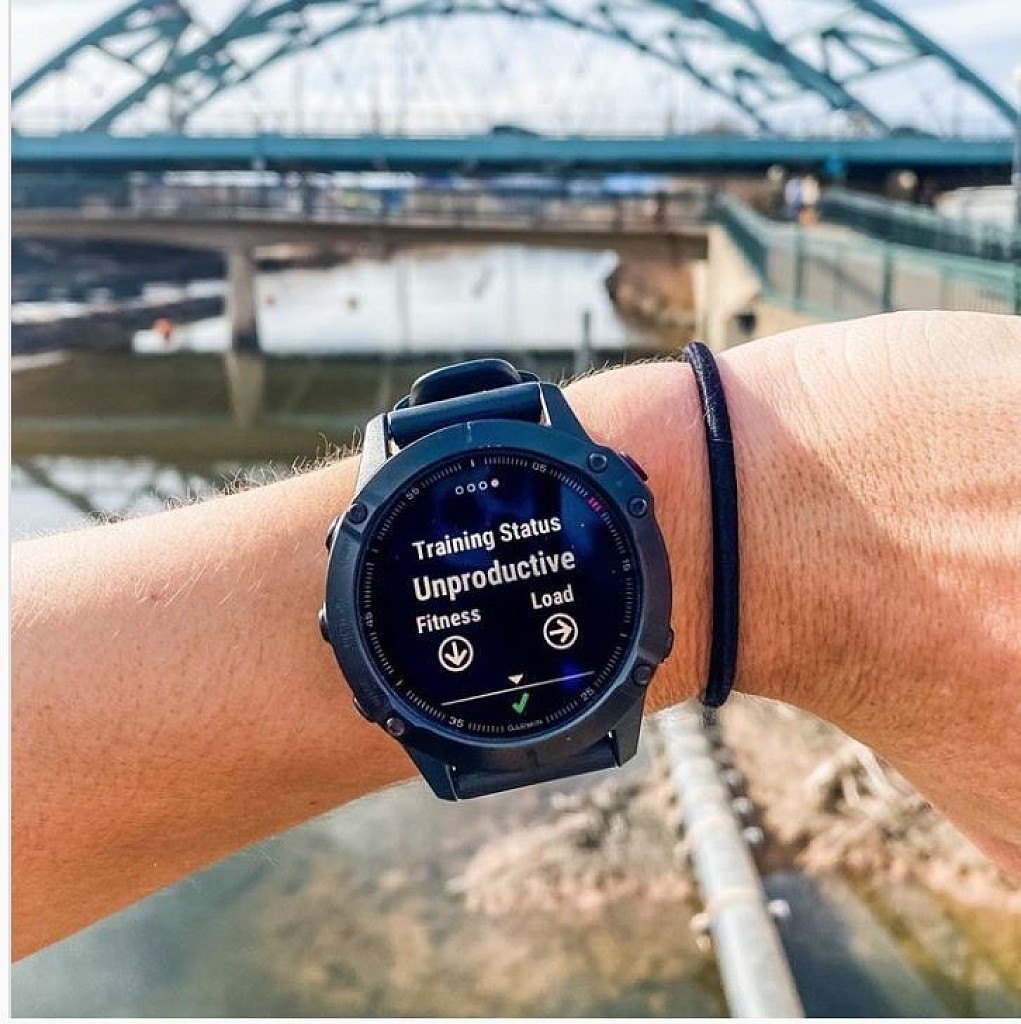Running News Daily
Running News Daily is edited by Bob Anderson. Send your news items to bob@mybestruns.com Advertising opportunities available. Train the Kenyan Way at KATA Kenya and Portugal owned and operated by Bob Anderson. Be sure to catch our movie A Long Run the movie KATA Running Camps and KATA Potato Farms - 31 now open in Kenya! https://kata.ke/
Index to Daily Posts · Sign Up For Updates · Run The World Feed
How to Balance Your Training Metrics With Your Mental State
In March, I ran my second fastest marathon. I had trained harder than I had ever trained before, but according to my Garmin Fenix 6x—which I was using for the first time during this training cycle—only one day of training in the two months leading up to the race was deemed “productive.” One. day.
My 22-mile run? The hill sprint repeats I did at altitude? The extra slow recovery runs? All “unproductive,” according to the training status that would flash across the screen on my wrist after nearly every workout.

That feedback only made me determined to run every run in my training program exactly as prescribed—not taking into account the fact that my body was still adjusting to altitude, that I was significantly increasing my weekly mileage, or that, you know, sometimes life happens and you might need to skip a run. I was so fixated on switching that status to productive, I stopped listening to my own body.
Despite the fact that I could tell I was getting faster in my speedwork and that I knew my stamina was increasing in my longer runs, I felt like I was failing at training every time I saw that “unproductive” status. I wasn’t seeing it as a statement on my training, I was letting it define how I viewed myself as a runner. By the time I crossed the finish line of that marathon, I knew it was time to figure out a healthier way to use my metrics for motivation while protecting my mental state.
What even is “Training Status”?
I realized, after several months of letting this metric dictate my feelings toward running, that I didn’t even fully understand what it tracked or what it meant. So I talked to Joe Heikes, the lead product manager for Garmin’s fitness watches. He explained that on Garmin watches, the Training Status feature pulls information from your VO2 max estimations and your training load data to provide feedback on the effectiveness of your training.
Your VO2max—or the maximum rate at which you can deliver oxygen to your exercising muscles—is a measure of aerobic fitness. “The VO2max calculation looks at the relationship between your heart rate and pace to determine whether you’re getting fitter or not,” explains Heikes. This feature also accounts for variables such as altitude and heat, which could affect your heart rate but not your actual fitness level. On a very surface level, if that number’s trending up, you’re getting more fit; if it’s going down, you may be losing fitness.
Training load, on the other hand, is based on excess post-exercise oxygen consumption (a.k.a EPOC or the “afterburn effect”), or your increased rate of oxygen intake following activity. The more intense your run, the higher your EPOC will be. “Basically, the watch scores every run that you do, based on your heart rate data, to determine how big of an exercise ‘dose’ that was,” says Heikes.
Looking at a seven-day window, the watch can determine whether you’re getting more or less fit as your training load increases or decreases. If your fitness appears to be getting better at the same time your training load is increasing, we would call that productive,” he says. “If your training load is increasing but your fitness is going down, then that's an unproductive state.” And there it is.
Why do “negative” stats bum us out so much?
Running is a very predictable sport. You put one foot in front of the other, then repeat— sometimes for hours. “There aren’t a lot of variables in it, so it’s easy to get all these measurements and feel like there’s a ‘formula’ for success,” says Nicole Detling, Ph.D., a sports psychologist and author of Don't Leave Your Mind Behind: The Mental Side of Performance. “But you can get addicted to those stats really easily, and that addiction can cause a lot of anxiety because you’re focusing more on what you aren’t doing than on what you are doing.”
Fitness watches are great motivators when you want to plan specific workouts, run within a specific heart rate zone, track pacing improvements, or tally up miles. “But there’s so much these devices can’t quantify,” says Detling. Your body is your biggest variable—a watch can’t tell if you ate something bad for lunch or you just broke up with your partner. You have to take those things into account when assessing your performance. That’s why the best coaching plans are designed with flexibility in mind, so they can be adjusted depending on your circumstances.
As for the gut punch of the word “unproductive,” Detling says, “We get emotionally attached to the connotation of certain words.” No matter what your physiological data says, “the reality is, you still expended and exerted a certain level of effort that you want to feel acknowledgement for,” she explains. That doesn’t mean you necessarily need praise, “but you want to feel good that you did something—especially if it freaking hurt, right?”
The problem with that, though, is that you’re focusing on the outcome of a run, not the run itself. “A lot of the time, we focus our thoughts and feelings on getting a certain time, covering a certain distance,” says Detling. “But, if at the beginning of the run, we’re only thinking about the end, we’re probably not going to get there very well.” Insert one of the many platitudes that emphasizes: It’s about the journey, not the destination.
In fact, all that internal pressure to perform for a certain outcome actually wastes precious mental energy you could be putting toward a more efficient performance, says Detling. And dwelling on the outcome of a run that didn’t meet your expectations wastes the mental and emotional energy you could put toward being more productive in your next run.
So how can you balance the metrics and your mental state?
When Lindsey Clayton, a certified run coach and trainer at Barry’s Bootcamp in New York City, was training for the 2018 New York City marathon, she became such a prisoner to her data that it would ruin her run, she says. “And then I wouldn’t stop thinking about the bad run, and it would ruin my whole day.”
She eventually decided to ditch her watch entirely for her mid-week 6-mile runs and use a landmark as her turnaround point. “The whole reason I run is to feel free—to just be in my body and be in the moment,” says Clayton. Now, she runs watchless once or twice a week based on how she feels. “If I think that seeing I’m running slower than yesterday is going to mess with me mentally, then I know I shouldn’t wear a watch,” she says. “On those days, I’m committing to being in the moment.”
Finding, or remembering, your why can help balance the data and your perspective. That doesn’t mean you can’t have a goal, like running a marathon. But “set your goal and forget it and focus on the process,” says Detling. “If your ‘why’ is to run a marathon, that’s not going to get you through the difficulties that you’re going to experience along the way. Your why has to be strong enough to get you out to do what you’re supposed to be doing on the days when you don’t feel like it.”
You also need to give yourself a little grace. “Runners are very type A, but that has to come with some flexibility,” says Detling. If you didn’t hit your paces, or you cut your run short early, or your watch tells you that your run was unproductive, find something productive about it: Did it increase your mental toughness? Did you get outside when the alternative was sitting on the couch? Did you learn something new about your body?
No matter how advanced tracking technology gets, it should never outweigh listening to your body. “I think that you can hold those two sets of facts in a healthy tension,” says Heikes. “I’ve been running for a long time, and I feel like I know my body pretty darn well. But there have been times when I’ve ignored the watch because I didn’t want to hear the truth it was telling me, and that didn’t work out for me. You have to almost blur your eyeballs and look for the long-term trend versus getting caught up in the minutiae.”
by Runner’s World
Login to leave a comment




